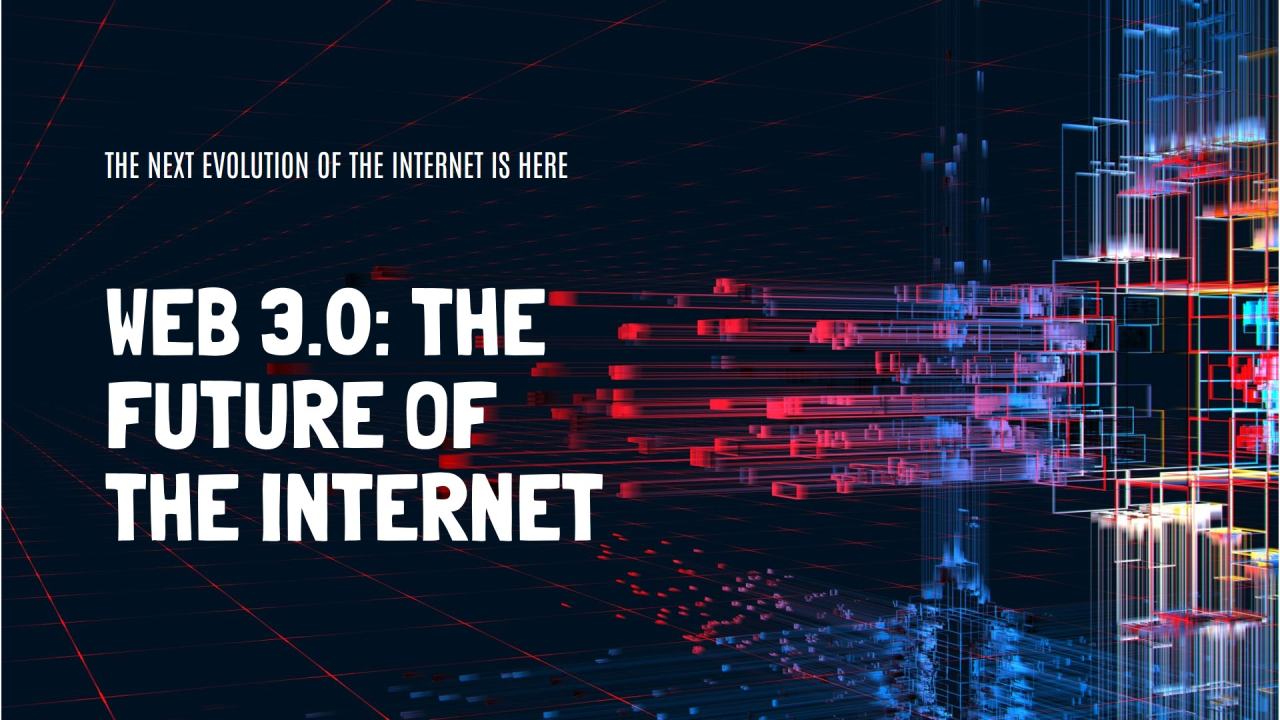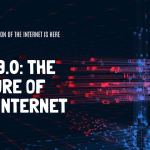Web3 Technology: The Next Evolution of the Internet
Web3 is a revolutionary technology that completely changes the digital world. Web3, is the third generation of the World Wide Web, which was developed with the help of the predecessors; Web1 and Web2. In this blog, you will find what Web3 technology is, how it differs from Web2, its major benefits, and potential challenges that may hinder its growth.
What is Web3 Technology?
Web3 is a new version of the internet that is more decentralized, transparent and user-centric than the original. Blockchain technology, cryptocurrencies and other new technologies provide the capability to change the control and ownership of data and digital assets from the conventional entities to individuals.
How Web3 Differs from Web2
Web2, the current internet, has been characterized by the great number of platforms that are controlled by large companies. Web3, on the other hand, adopts a decentralized approach allowing the users to have more control over their data and digital interactions. Following are the principle differences:
Ownership: In Web2, user’s data tend to be owned and controlled by companies. While in Web3 technology, the user can have the right and control of the data.
Interoperability: Web3 encourages interoperation between different platforms and services, unlike many Web2 applications which operate in silos.
Privacy and Security: Web3 highlights the importance of privacy and security through cryptographic techniques as well as decentralized storage.
Trust: The domain of Web3 shuns intermediaries, leading to transparent and verifiable transactions on blockchain networks, thus, the trust is built up.
Major Benefits of Web3
Web3 technology provides some of the following advantages:
Enhanced User Privacy: Users have the power to manage their personal information regarding what they share as well as to whom they share it.
Increased Security: Decentralized systems are more resilient to security issues and data breaches.
Reduced Censorship: Decentralization makes it difficult to screen or block content and control access.
New Economic Models: Web3 opens up various new ways of creating and exchanging cryptocurrencies and tokens.
Improved Transparency: Blockchain is the technology behind a clear and noneditable and transparent record of transactions as well as interactions.
Potential Deterrents to Web3 Growth
Though it holds the potential of promise, Web3 is faced with several challenges:
Scalability: Indebtment blockchains are often bogged down by an overwhelming amount of unsuccessful activities on the net.
User Experience: Web3 applications might be too intricate for average people thus they might not readily grasp the nitty-gritty of using them.
Regulatory Uncertainty: The frequently changing government rules apply to cryptocurrencies and technology and often lead to hindrances in their way of development and in some cases, may even deter acceptance.
Energy Consumption: A great deal of energy goes to waste in such networks, particularly the ones using the Proof-of-Work consensus algorithm.
Education and Awareness: A very large section of people still do not know what Web3 is and thus, its adoption might take longer.
Key Components of Web3 Technology
Blockchains (Ethereum, Solana, Polygon)
Blockchains are the very base that Web3 is built upon. They are the records of the activities on the net stored on the computers. Among others there are such blockchain platforms as:
Ethereum: It is the most frequently used network for smart contracts and decentralized applications.
Solana: It is known for its high speed and low transaction costs.
Polygon: A scaling solution for Ethereum that aims to improve transaction speed and reduce fees.
Smart Contracts (self-executing agreements)
Smart contracts are autonomous and self-enforced contracts with their terms recorded in code lines. They self-run when the conditions of the contract are met thus exclude the need for any brokers. Smart contracts also make transactions that are trustless and are in reality being applied in a lot of Web3 applications.
Decentralized Apps (DApps)
DApps are the kinds of applications operating blockchain platforms or other decentralized systems of the Internet. DApps have special characteristics and could be as high as potential. Below is a more detailed study of DApps:
Decentralization: Unlike the pattern of centralizing the apps to a single entity, DApps are the live display of various cryptocurrency platforms. They function on a peer-to-peer network – mostly on blockchain.
Intelligent Contracting: The majority of DApps use smart contracts as their basic function. These are the self-executing contracts that are programmed to execute once a certain set of conditions are met.
Open Source: Most DApps have their source code publicly available, being a model of transparency and providing one way for the community to involve in the project and carry out proper audits.
Integration of Cryptocurrencies: DApps habitually involve a cryptocurrency or a token to provide access to services or act as a reward within the system.
Anti-Censorship: This is what characterizes DApps. They are the kind of apps that enable no censoring or easy takedown, the same as traditional ones do, offering an unprecedented level of freedom.
Different Types: The DApps can be classified into several types that include:
Financial services (decentralized exchanges, lending platforms)
Gambling and serving fun
Chat networks
File storage and sharing
Identity management systems
Obstacles: The issues with DApps could be:
Users’ interfaces got complicated by blockchains which are not quite clear for everyone to understand and make use of
The networks of blockchains that are provided to the developers non-existently at an outstanding level of scalability
There are certain security vulnerabilities in smart contracts
Dapps mark a significant departure from our conventional way of using applications. Apart from giving us more authority over the apps we use, more transparency and resistance to centralized authority, DApps may also have a drawback which is getting acquainted with the new technology. To me as technology advances, we will be able to see more user-friendly DApps that could be the substitute for so many of the centralized services that we use at present time.
Cryptocurrencies & Tokens (NFTs, DeFi)
Cryptocurrencies and tokens are those two of the Web3 eco-system’s main components.
Cryptocurrencies: Are not only non-physical but also those which are made by solving mathematical problems which are mostly based on the unique characteristics of the internet. Examples of this are Bitcoins and Ethers.
Tokens: Are the cryptocurrencies, from which some were created on others’ blockchain platforms. They are more of a means of exchange rather than a store of value.
Non-Fungible Tokens (NFTs): These are additional to physical possessions, mainly digital assets which only exist in a technological environment and the tools, or finance that they represent. NFTs are a non-fungible token that contains a set of metadata that distinguishes it from all other NFTs….
Decentralized Finance (DeFi): This is a sector of blockchain technology which focuses on investment opportunities for users who can access finance not through traditional banks.
These examples are the ones that are taking us to broader and more democratic ownership and valuation perspectives.
DAOs (Decentralized Autonomous Organizations)
DAOs are now replacing some traditional organizations
DAOs: these are constituted by sets of rules written and embedded in the form of a computer program. These rules are then monitored and carried out the members of an organization distributing tokens and thus not respecting any government influence.
Votes: Members are the decision makers who vote for a proposal and the one getting success is often the holder who has a governance token.
Clarity: The T and other standards and financial records are in the encryption and therefore of the ledger and all of them are available for access by the members.
Usages: The application of DAOs is create a multitude of areas from investment groups to charity.
DAOs have been very popular as the projects present themselves in the form of decentralized groups of individuals who take in their hands the decisions with the overarching purpose of common interest in the management of different activities and resources.
These components of web: cryptocurrencies, tokens, and organizations are important in realizing the vision of decentralized web. They are designed to enable a new way of organizing, financing, making decisions and regulating the virtual communities and business activities.
Major Benefits of Web3 Technology for Startups
For Startups Web3 technology is one of the major boost-up. In every startup keeping running cost to minimum is much of an advantage. Here is how Web3 technology is helping startups to keep their running cost down and survive in the market longer to succeed.
- Decentralization
Through Web3, intermediaries are no longer necessary which in turn cuts down the expenditures and increases the productivity of the startups.
- Enhanced Security
Blockchain technology incorporates very strong security measures that safeguard the data and transactions of startups.
- Transparency
For businesses, we have seen that Web3’s open nature builds trust with people as they can be part of the process through their votings.
- Tokenization
New Startups should be able to develop and manage asset tokens with ease while at the same time diversifying their revenue streams.
- Smart Contracts
Automated, self-executing contracts not only reduce the workload of the administrative department but they also ensure the fulfilment of the obligations of the contract.
- User Ownership
The users of Web3 are not just allowed to take back their information but they can also bring in more privacy-aware clients/projects to the startups.
- Global Accessibility
We have seen Internet 3.0 as a web3 technology empowering the long lines of international businesses to reach billions of people far beyond their existing geographical markets.
- Innovation Opportunities
Web3 is one of the many new beasts that businesses can now adopt and think of fresh ways of evolving through such innovative approaches.
These advantages have considerably improved the growth and achievement of Web3 startups targeted by Web3 markets.
Blockchain for startups
Blockchain for any startup has many advantages. Not only for technical companies Blockchain technology has come up as an economical option for companies from manufacturing, services, fintech, healthcare and other domains.
Greater Security
Decentralized and encrypted nature of blockchain empowers better security for data which in turn guards against the threat of a cyber attack.
- Cost Savings
The elimination of middlemen spares some resources and streamlines the whole operation with the aid of blockchain.
- Get Digitized
For supply chain a blockchain achieves perfect transparency that makes it easy for companies to track the goods from origin to delivery.
- Quicker Settlement
Smart contracts and other automated processes have cut down transaction time and increased overall efficiency.
- Tokenization
By doing so, one can not only easily create and manage digital assets, but also, it has excited people whether they are customers, partners, or our outside sponsors who now will also be able to engage other people.
- Decisions beyond Centralization
The level of transparency brought about by blockchain technology makes it possible to democratize the decision-making process through the contribution of stakeholders and participants.
- Expanded Innovation Opportunities
This innovation has helped in establishing new business models and services, consequently, it has also updated the innovation in our startup.
- Data Integrity
We have already received many benefits of Blockchain-like data accuracy and consistency across operations.
- Global Access
Blockchain enables businesses to reach markets and customers companies couldn’t even imagine before.
These benefits have made startups more competitive through greater mutual trust.
Applications of Web3 Technology Across Various Domains
The impact of Web3 is growing across all sectors. The core applications of Web3 technology in different domains are as follows.
- Finance and Banking
DeFi in the financial sector is changing the conventional systems as Web3 is being used to provide unhackable and decentralized infrastructures that are secure and open to anyone in the world. Web3 provides a combination of security, speed, and low cost that real-time systems cannot give.
Decentralized Finance (DeFi): The proliferation of DeFi platforms such as DAI, Compound, and Uniswap has ensured efficient peer-to-peer borrowing, lending, swaps, and trade.
Digital Identity: Blockchain, a sole system of trust and authority allowing tamper-proof digital identities, is proving to be a blueprint for the corporate world in the fight against fraud.
Cross-border Payments: Web3 is pervasive in this area as it is enabling the easy and often low-cost transfer of money from one country to another, sometimes in a matter of minutes.
- Healthcare
There are many ways in which Web3 is contributing to the health sector.
Patient Data Management: Real cybersecurity needs to install a parallel albeit the real-time control and monitoring patient as well as reuse operations.
Drug Traceability: Blockchain technology is a surety for the legitimacy of the drugs in the pharmaceutical industry.
Research Collaboration: Many clinical researches should involve a global team and decentralized networks are a very good way to achieve that.
- Supply Chain Management
Web3 is a vital factor for transparency and efficiency in supply chains.
Product Tracking: This is now the era where we can actually trace an item from its origin to the end user with very high precision.
Quality Assurance: These systems are also introducing automation in quality control procedures using smart contracts.
Inventory Management: Unfolding technology has allowed error proofing, such is the case of the implemented stock management in a time of zero tolerance to flaws.
- Real Estate
In the real estate world, the transformation is the order of the day.
Tokenization: One of the latest trends in real estate is to merchandise properties by dividing them into digital tokens in such a way that everyone who invests in that project can gain access to the asset. Let’s get through the tedious task of proofs to finalize the deal.
Smart Contracts: Digital platforms integrated with blockchain technologies allow you to sign smart contracts and deal with fewer intermediaries.
Virtual Real Estate: Virtual reality is beyond merely being a playground and its digital land in the metaverse is becoming a new asset class which does not only exist squared.
- Government and Public Services
Governments opt for Web3 for better service.
Voting Systems: Use of technologies such as blockchain to increase election security and transparency has had a great impact. Digitization of documents and blockchain adoption keeps record keeping practically immune to any tampering.
Public Records: We are creating tamper-proof systems for land registries and other official documents.
Citizen Services: Cities are improving the quality of public services using decentralized identity systems.
- Education
The world of education is currently experiencing transformation due to Web3.
Credential Verification: Our district makes use of blockchain technologies to give and prove academic certificates.
Personalized Learning: AI and blockchain have paved the way for new ways of learning like adaptive learning experiences.
Decentralized Learning Platforms: Replacements for intermediaries and further democratization of knowledge access come out of this digital interconnectedness and the fall of its barriers.
Web3 technology is not just a passing fad but a major paradigm shift in the way we engage with digital systems in every industry.
Web3 Software Development
Web3 software developing is not only about smart, decentralized apps but is also about the new capacities of the digital world. Here are the key aspects:
Decentralization: Contrary to the conventional centralized systems, Web3 apps leverage blockchain and as such, they don’t have the traditional OS of a single point and as a result, not only this but the controlling entity is also not present.
Smart Contracts: The term refers to the automatically fulfilled contracts, which are part of the basic applications of the Web3 system, becoming independent transactions and agreements.
Interoperability: In its turn, Web3 creates an environment where dialogue between protocols and the formation and data transmission of virtual representations of the real world can be pursued with different blockchain networks and decentralized applications.
Token-based Economy: Many Web3 applications are developed with their own tokens, and this provides a new economic setup and the introduction of new ways of giving the incentives.
Enhanced Privacy and Security: The cryptographic techniques that the system uses will ensure that the data is not tampered with during file transfer and the private nature of your data is preserved by challenging rotation of the safe user password, thereby reducing the probability of personal data breaches and possible threats like unauthorized data access.
User Ownership: Web3 operations can actually be that which affords the users legal ownership of their digital assets and data, an unthinkable event on traditional web platforms.
Open-source Development: The vast majority of these Web3 projects are open-source. Competing with these projects based on their core decisions in the development process promotes collaboration and transparency to the developer part.
New Programming Paradigms: The developers are required to take on the task of learning new languages like Solidity and adapt to the paradigms of decentralized systems and frameworks involved in writing applications.
Scalability Challenges: The problem of scaling blockchain technology is a great focus in developing Web3, and endeavors to address it include things like L2 protocols.
Integration with Traditional Web: Most Web3 applications are difficult to synthesize with the rest of the Web except for the use of Web2, which becomes one of the main problems during development. These projects give a new set of challenges to developers.
With software development played out in this environment, Web3 software is a kind of a change of mindset in which one submits himself/herself to the fact the user is in control and it is never just one entity anymore. It is a realm where technology is more properly developed and together with that comes higher security and thus the protection of the individual.






